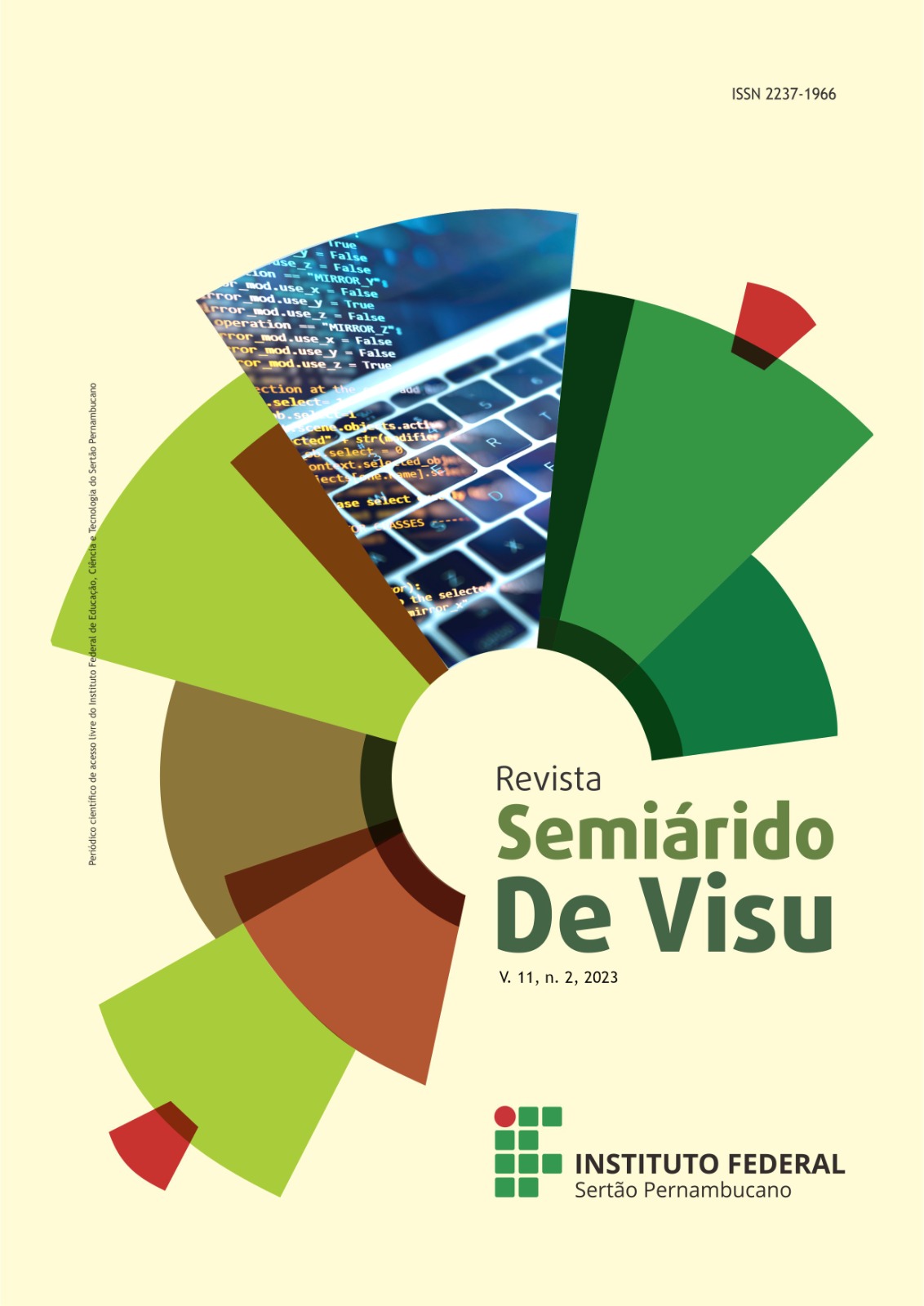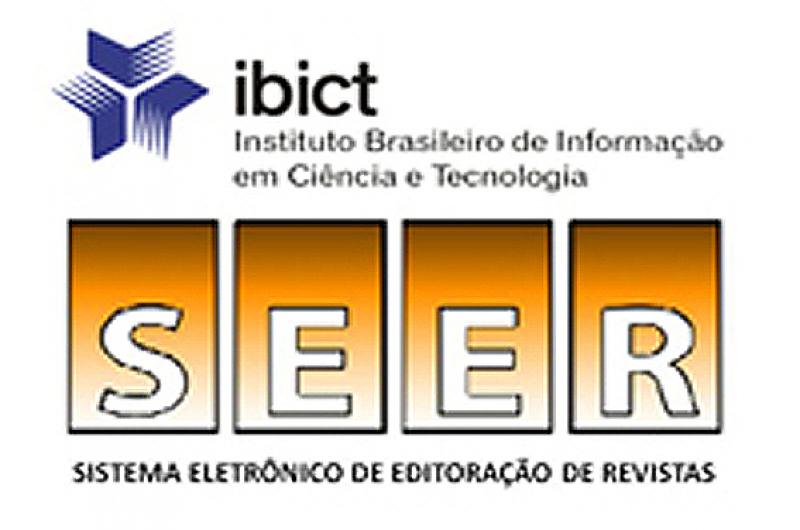Use of seaweed extract on sweet pepper seedlings in the Lower Middle of the São Francisco Valley
Use of seaweed extract on sweet pepper seedlings in the Lower Middle of the São Francisco Valley
DOI:
https://doi.org/10.31416/rsdv.v11i2.486Keywords:
Capsicum annuum L., Ascophyllum nodosum, Plant science, SustainabilityAbstract
Vegetables are essential vegetables for the health of the population. Bell pepper is among one of the most consumed and has direct benefits in reducing the risk of various diseases. However, it is one of the crops with the highest incidence of pests. Thus, the need arises to seek sustainable ways to produce vigorous and resistant seedlings with less use of agrochemicals, ensuring plants prepared for field conditions. The use of seaweed extract-based biofertilizers has grown in the market, as it promotes satisfactory results in plant development and does not generate waste. The objective of this work was to evaluate the effect of different concentrations of seaweed extract (Ascophyllum nodosum) on the production of sweet pepper seedlings. The seedlings were grown in a greenhouse and the experimental design was completely randomized, with 5 treatments and 4 replications. The dosages used in the treatments were: T1: control (water only); T2: 1 mL.L-1; T3: 2 ml.L-1; T4: 3 mL.L-1 and T5: 4 mL.L-1. The following variables were evaluated: length of shoot and root system; fresh mass of the aerial part and root system, dry mass of the aerial part and root system and chlorophyll content. The data were analyzed in the program AgroEstat 1.1.0.712 rev 77. T2 was superior to the other treatments, presenting a significant difference for the analyzed variables (except chlorophyll content), showing that the use of seaweed extract is an efficient tool in the production of seedlings from the Submiddle of the São Francisco Valley.
References
AMORIM NETO, A.F. Produção de mudas de tomate com extrato de algas marinhas. Trabalho de Conclusão de Curso. Agronomia. Centro Universitário de Anápolis –Unievangélica. 27p. 2019.
ANVISA. AGENCIA NACIONAL DE VIGILÂNCIA SANITÁRIA. Resolução da diretoria colegiada- RDC nº 8, de 27 de fevereiro de 2009. Disponível em: www.anvisa.gov.br/legis. Acesso em: 08 de jan de 2023.
ARRAIS, I. G.; DA SILVA, C. C.; DE ALMEIDA, J. P. N.; DANTAS, L. L. G. R.; OLIVEIRA, F. S.; MENDONÇA, V. Extrato da alga Ascophyllumnodosum (L.) Le Jolis na produção de porta-enxertos de Anonna glabra L.Revista de Ciências Agrárias, 2016,39(2): 234-241.
Artigo - Por que devemos consumir mais hortaliças?. EMBRAPA, 2020. Disponível em: hortalicas#:~:text=Sabe%2Dse%20que%20o%20consumo,em%20alimentos%20de%20origem%20animal. Acesso em: 09 de fev de 2023.
BARBOSA, J. C.; MALDONADO JUNIOR, W. AgroEstat: sistema para análises estatísticas de ensaios agronômicos. Jaboticabal, FCAV/UNESP. 396p, 2015.
BENARROZ, M. Pimentão: do sabor exótico à proteção.Disponível em: https://monicabenarroz.com/2021/06/24/pimentao-do-sabor-exotico-a-protecao/. Acesso em: 06 de jan de 2023
BRITO, FRANCISCO, 2017. Produção de tomate (Solanumlycopersicum l.) reutilizando substratos sob cultivo protegido no municício de Iranduba - AM. Acesso em: 07 de jan de 2023.
CARMELLO, Q. A. DE C. Nutrição e adubação de mudas hortícolas. In: MINAMI, K.; TESSARIOLI NETO, J.; PENTEADO, S.R.; SCARPARI, F.J. A produção de mudas hortícolas de alta qualidade. Piracicaba: Gráfica Universitária de Piracicaba, 1994.p. 75-93.
COSTA, E.G.; BARRETO, C.F.; FARIAS, R.M.; MARTINS, C.R. Propagação de amoreira-preta em diferentes substratos e estimuladores de enraizamento. BrazilianJournalofDevelopment, Curitiba, v. 6, n. 6, p.36654-36662, jun. 2020.
DINIZ, ANA, 2017. Alga marinha na agricultura. Disponível em: https://agroonline.blog/2017/09/27/alga-marinha-na-agricultura/. Acesso em: 06 de jan de 2023.
DOS SANTOS VIANA, J., ANDRADE, G. S., PALARETTI, L. F., MARQUES, S. G., Souza, A. F. C., & LOPES, K. C. M. Produção da alface roxa sob efeito da aplicação foliar de extratos de algas marinhas em ambiente protegido.
EL BOUKHARI, M. E. M., BARAKATE, M., BOUHIA, Y. &LYAMLOULI, K.(2020). Trendsin SeaweedExtractBasedBiostimulants.Manufacturing ProcessandPlants, 9 (3), 359. https://doi.org/10.3390/plants9030359.
FRANÇA, W. M. S.; MOREIRA, C. O. DESENVOLVIMENTO INICIAL DE MILHO (Zea Mays) A PARTIR DE APLICAÇÕES DE MICRONUTRIENTES E EXTRATO DE ALGAS, 2022. Disponível em: http://repositorio.cesg.edu.br/bitstream/CESG/17/1/W%c3%a1llace%20TCC%20Corrigido-compactado_compressed.pdf. Acesso em: 04 de junho de 2023.
FREITAS, F. R.; BRIGHENTI, A. F.;COUTINHO, M. D. C.;VOLTOLINI, J. A.;MALOHLAVA, I. T. C.;TOMAZETTI, T. C.; LONE, A. B. Efeitos do extrato de algas no enraizamento de pitaia, Agropecuária Catarinense, Florianópolis, v.34, p.34-36, n.2, maio/ago. 2021.
FRIEDRICH, J. C. C. et al. Bioestimulante: uso em produção de mudas e resultados na produção comercial. BrazilianJournalofDevelopment, v. 6, n. 5, p. 27392- 27409, 2020.
IBGE: Instituto Brasileiro de Geografia e Estatística. Censo Agropecuário, 2020. Disponível em https://sidra.ibge.gov.br/tabela/6619 . Acesso em: Jan. 2023.
GIACOMIN, R. M.; RUAS, C. F.; BABA, V.Y.; de GODOY, S. M.; SUDRÉ, C. P.; BENTO, C. dos S.; da CUNHA, M.; GERONIMO, I. G. da C. RODRIGUES, R.; GONÇALVES, L. S. Phenotypic, molecular andpathogeniccharacterization of.
GONZAGA, B. A.; ANDRADE, C. L. L.; FILHO, F. R. C. Tratamento de sementes de milho com bioestimulante. BrazilianJournalof Science,2(3), 46-53, 2022. ISSN:2764-3417.
JÚNIOR, D. A. R; JÚNIOR, J. R. S.; NETO, J. A. P.; ANDRADE, F. C.; CRUZ, W. V. C.; REIS, L. L. DESENVOLVIMENTO DE MUDAS DE BERINJELA EM FUNÇÃO DO USO DE EXTRATO DE ALGAS (Ascophyllumnodosum L.) v. 14 n. 1 (2022): 14ª JORNADA CIENTÍFICA E TECNOLÓGICA DO IFSULDEMINAS. Disponível em: https://josif.ifsuldeminas.edu.br/ojs/index.php/anais/article/view/148. Acesso em: 07 de fev de 2023.
LINS, Miriam. Alga marinha na agricultura. Disponível em: https://agroonline.blog/2017/09/27/alga-marinha-na-agricultura/. Acesso em: 07 de jan de 2023.
MAPA – Ministério da Agricultura. Disponível em: http://www.agricultura.gov.br Acesso em: 06 de fev de 2023.
Mello, W. M.; Santos, J. O.; Ohse, S.(2021).Vigor de sementes de milho tratadas com bioestimulantes. Visão Acadêmica, v. 22, n. 1, p. 4-19. http://dx.doi.org/10.5380/acd.v22i1.78887.
NASCIMENTO, M. W. Mudas. Embrapa. 18 de fevereiro de 2022. Disponível em: https://www.embrapa.br/en/agencia-de-informacao-tecnologica/cultivos/pimenta/producao/mudas. Acesso em: 06 de fev de 2022.
PARADIKOVIC, N. et al. Biostimulantsresearch in some horticulturalplant
species—A review. Food and Energy Security, v. 8, n. 2, p. 1–17, 2019.
RIBEIRO, R. F.et al. Bioestimulante na produção de mudas de videira CV. Crimson Seedless.Revista Scientia Agraria, v. 18, n.4, out./dez. 2017.p.36-42
SACCOMORI, N. L. (2021). Bioestimulantes à base de extrato de algas marinhas na agricultura: Estado da arte e potencial de uso. 49 f. Trabalho de Conclusão de Curso. Universidade Federal da Integração Latino-Americana.
SANTA, J. D. TRATAMENTO DE SEMENTES DE TOMATE COM PRODUTO COMERCIAL A BASE DE EXTRATO DE ALGA, 2021. Disponível em: https://rd.uffs.edu.br/bitstream/prefix/4429/1/SANTA.pdf. Acesso em: 04 de junho de 2023.
SANTANIEL, F. C. P.; Importância dos extratos de algas para a agricultura. Campo e Negócios online. 08 de maio de 2022. Disponível em https://revistacampoenegocios.com.br/importancia-dos-extratos-de-algas-para-a-agricultura/. Acesso em: 13 de jan e 2023.
SILVA, M. B. P. da; SILVA, V. N.; VIEIRA, L. C..BioprimingofsweetpepperandtomatoseedswithAscophyllumnodosum. FacultadNational de Agronomía, Medellín, v. 74, n. 1, p.9424-9430, nov. 2020.
SILVA, E. C. A. da; COSTA, J. R. da S.; COSTA, P. C. F. da; ALCANTARA, A. M. A. C. de; SANTOS, C. A. dos; NOGUEIRA, R. J. M. C. Salinidade na emergência e no crescimento inicial de mulungu. Revista Agrícola, v. 17, p. 63–69, 2019.
SILVA, C. P.; CRIVELARI, A. D.; CORREA, J. S. Desenvolvimento de mudas de alface e rúcula tratadas com biofertilizante de extrato de algas. Científic@-Multidisciplinary Journal, v. 8, n. 1, p. 1-10, 2021.
SILVA JÚNIOR, A. A.; MACEDO, S. G.; STUKER, H. Utilização de esterco de peru na produção de mudas de tomateiro. Florianópolis: EPAGRI, 1995. 28p. Boletim Técnico 73.
SOUSA, Liliane Marques; SILVA, Alasse Oliveira; TORSIAN, Waleska Silva. Inovações no plantio de pimentão. Campo e Negócios, 2022. Disponível em: https://revistacampoenegocios.com.br/inovacoes-no-plantio-de pimentao/#:~:text=O%20piment%C3%A3o%20ocupa%20uma%20%C3%A1rea,350%20mil%20toneladas%20no%20ano/ . Acesso em: 05 de jan de 2023.
TAIZ, L.; ZEIGER, E. Fisiologia vegetal. 3 ed. Editora Artmed, 2004.
VENDRUSCOLO, E. P.; MARTINS, A. P. B.; SELEGUINI, A. Promoção no desenvolvimento de mudas olerícolas com uso de bioestimulante. JournalOfAgronomicSciences, Umuarama, v. 5, n. 2, p. 73-82, 2016
Downloads
Published
How to Cite
Issue
Section
License
Copyright (c) 2023 Revista Semiárido De Visu

This work is licensed under a Creative Commons Attribution 4.0 International License.















